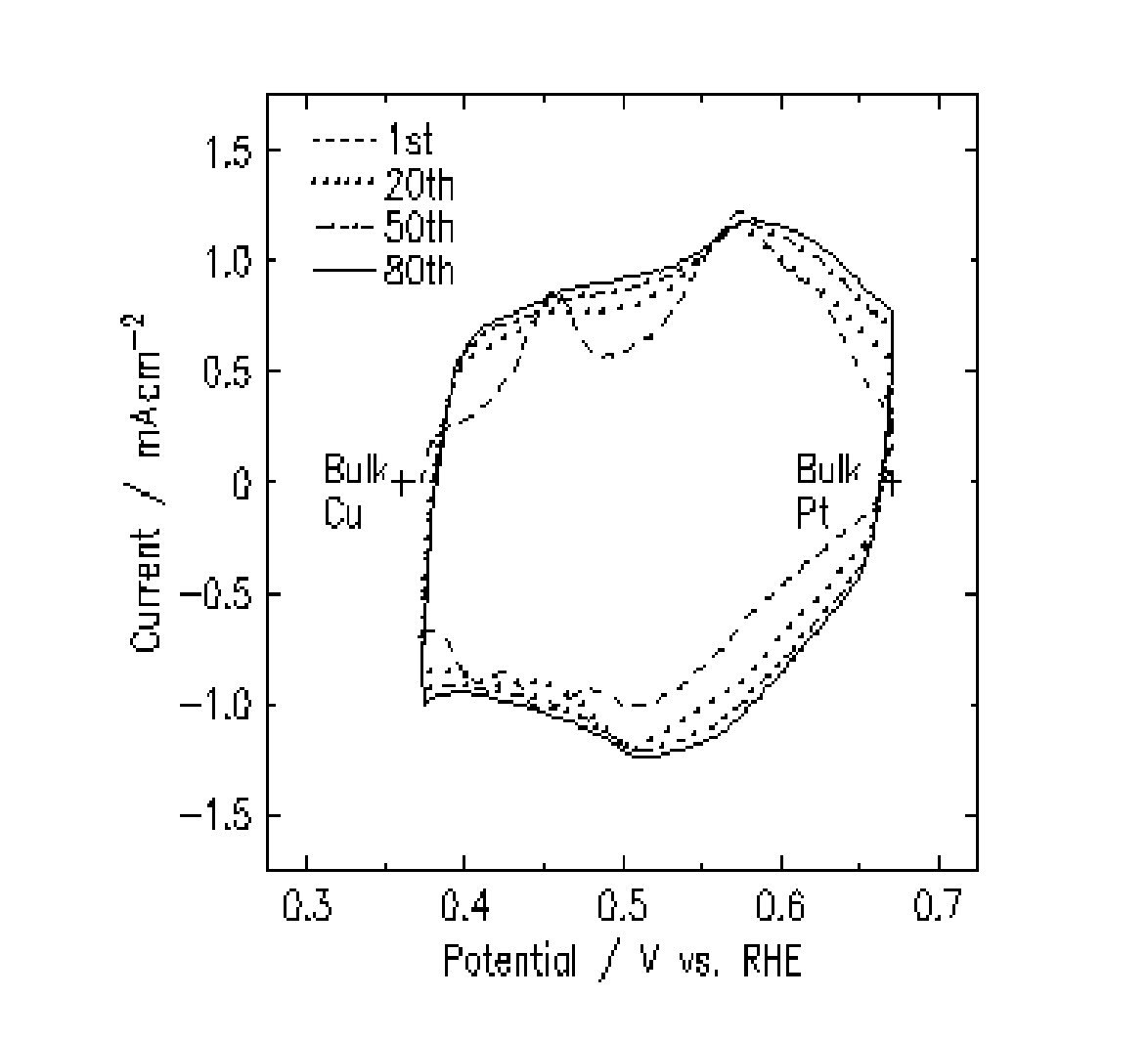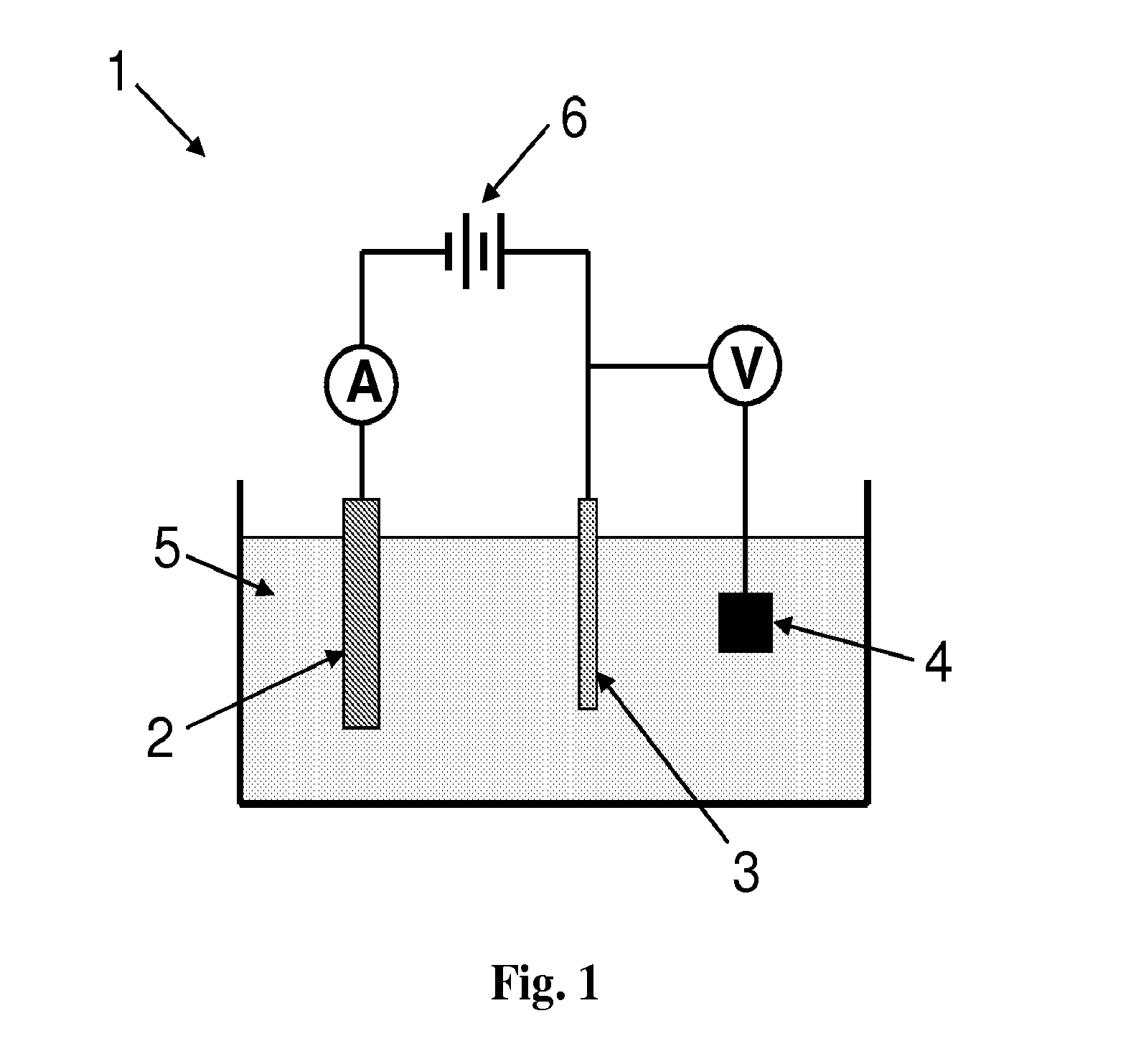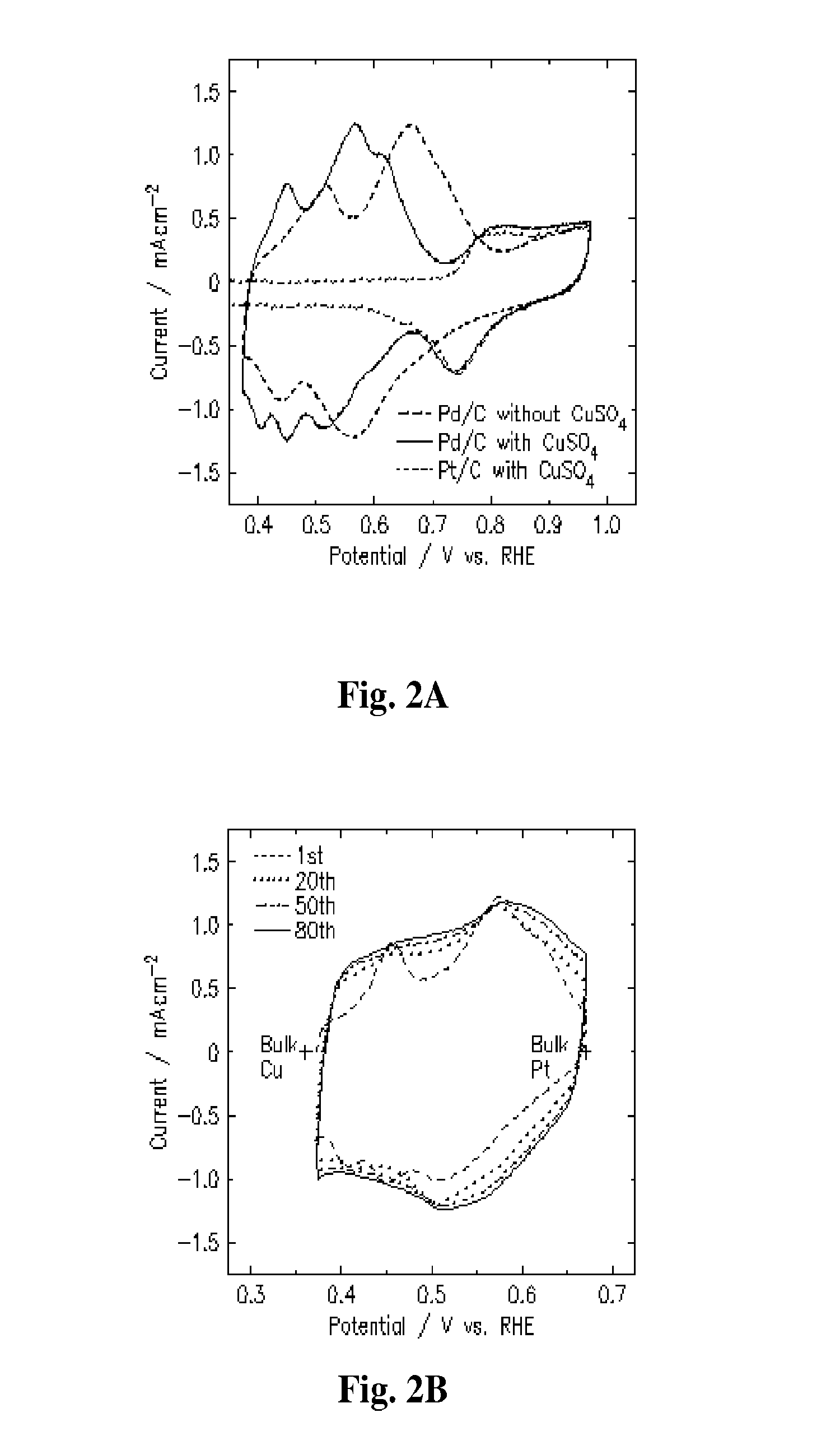Underpotential deposition-mediated layer-by-layer growth of thin films
- Summary
- Abstract
- Description
- Claims
- Application Information
AI Technical Summary
Benefits of technology
Problems solved by technology
Method used
Image
Examples
Embodiment Construction
[0025]In the interest of clarity, in describing the present invention, the following terms and acronyms are defined as provided below:
ACRONYMS
[0026]ALD: Atomic Layer Deposition[0027]CVD: Chemical Vapor Deposition[0028]ICP: Inductively Coupled Plasma[0029]MBE: Molecular Beam Epitaxy[0030]NHE: Normal Hydrogen Electrode[0031]OPD: Overpotential Deposition[0032]ORR: Oxidation Reduction Reaction[0033]PLD: Pulsed Laser Deposition[0034]TEM: Transmission Electron Microscopy[0035]UPD: Underpotential Deposition
DEFINITIONS
[0036]Adatom: An atom located on the surface of an underlying substrate.[0037]Adlayer: A layer of atoms adsorbed to the surface of a substrate.[0038]Bilayer: Two monolayers, one directly on top of the other.[0039]Catalysis: A process by which the rate of a chemical reaction is increased by means of a substance (a catalyst) which is not itself consumed by the reaction.[0040]Electrocatalysis: The process of catalyzing a half cell reaction at an electrode surface by means of a su...
PUM
| Property | Measurement | Unit |
|---|---|---|
| Thickness | aaaaa | aaaaa |
Abstract
Description
Claims
Application Information
 Login to View More
Login to View More - R&D
- Intellectual Property
- Life Sciences
- Materials
- Tech Scout
- Unparalleled Data Quality
- Higher Quality Content
- 60% Fewer Hallucinations
Browse by: Latest US Patents, China's latest patents, Technical Efficacy Thesaurus, Application Domain, Technology Topic, Popular Technical Reports.
© 2025 PatSnap. All rights reserved.Legal|Privacy policy|Modern Slavery Act Transparency Statement|Sitemap|About US| Contact US: help@patsnap.com



